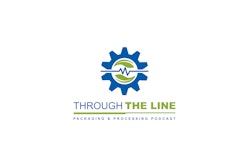
Covectra, a provider of track and trace systems, announces the release of ControlTrack, a mobile telehealth medication adherence management system to connect providers, patients, pharmacies, and other stakeholders in the delivery of healthcare meant to improve patient outcomes. Created by physicians, for physicians, ControlTrack is designed to integrate serialization, packaging, and cloud-based management to provide remote medication management especially valuable during the social distancing requirements demanded by the COVID-19 pandemic.
Maximizing medication adherence for patients with complex health issues such as heart failure is an important tool for preventing avoidable hospitalizations. For chronic pain patients who require opioids, close monitoring avoids abuse and illicit diversion, the major causes of the opioid epidemic. In the presence of COVID-19, a low-cost telemedicine system such as ControlTrack is meant to provide these benefits while preserving social distance.
The ControlTrack platform also offers two healthcare delivery portals: ControlTrack Provider and ControlTrack Pharmacy —as well as the ControlTrack Patient mobile application.
The healthcare provider portal is designed to offer a customizable patient-centric dashboard to monitor medication adherence virtually, to enable telehealth options that directly reach patients beyond the walls of their practice. Physician and caregiver teams should be able to more easily and quickly monitor use and ensure early intervention should any issues arise.
Features should include:
· Remote daily monitoring—Providers should be able to meet the changing needs of patients, especially for practices in remote/rural locations, as well as the evolving requirements for practical social distancing. Virtual high integrity dosage checks no longer require an office visit, so patients who may be ill or immuno-compromised receive a high level of care.
· Increase engagement with direct communications with patients—Patient communication features should send messages directly to the patient’s smart devices, increasing the likelihood of receipt as well as logging topics of interest, further reinforcing the provider/patient treatment goals and potential risks that may change as the level of care continuum evolves over time.
· Unified patient-centric view—Multiple providers treating the same patient should be able to share access to ControlTrack monitoring, reports, and analytics.
Says physician Frank P. James, MD, JD, DFASAM, FACLM from Stamford, CT.,“By providing new telehealth capabilities, I can personalize attention on issues of risk, adherence and long-term maintenance that reinforce individual treatment goals.”
The ControlTrack pharmacy portal is meant to allow pharmacists to easily link specific medications to specific patients. Pharmacists can utilize existing blister packaging and technology to make the linkage, says Covectra. The system’s open-source software is designed to allow integration into various healthcare systems. Future versions of the platform will integrate directly into pharmacy management systems, according to the company.
Covectra’s ControlTrack Patient mobile app is supposed to enable patients to use their smartphones or tablets to receive virtual real-time treatment from providers.
· Easy tracking and monitoring, reduce need for in-office visits—Patients should be able to easily track when they take their daily medications and see remaining doses that remain for multiple medications. This would help patients who may be distracted by life’s everyday challenges stay on course and demonstrate adherence with their treatment plans without needing to visit the doctor’s office.
· Better packaging—ControlTrack’s blister package configuration is used for the ubiquitous amber vial for secure maintenance of abusable medications. This is of particular importance as a 2019 JAMA Internal Medicine study suggested that the likelihood of a family member overdosing can be up to 15 times greater in a home with prescribed opioids in an unsupervised medicine cabinet.
· Real-time non-adherence—Medication utilization is documented, uploaded, and analyzed in the cloud in accordance with a provider’s treatment expectations. If the patient is non-adherent, a notification is forwarded to the provider practice-level log for review and appropriate follow-up.






















